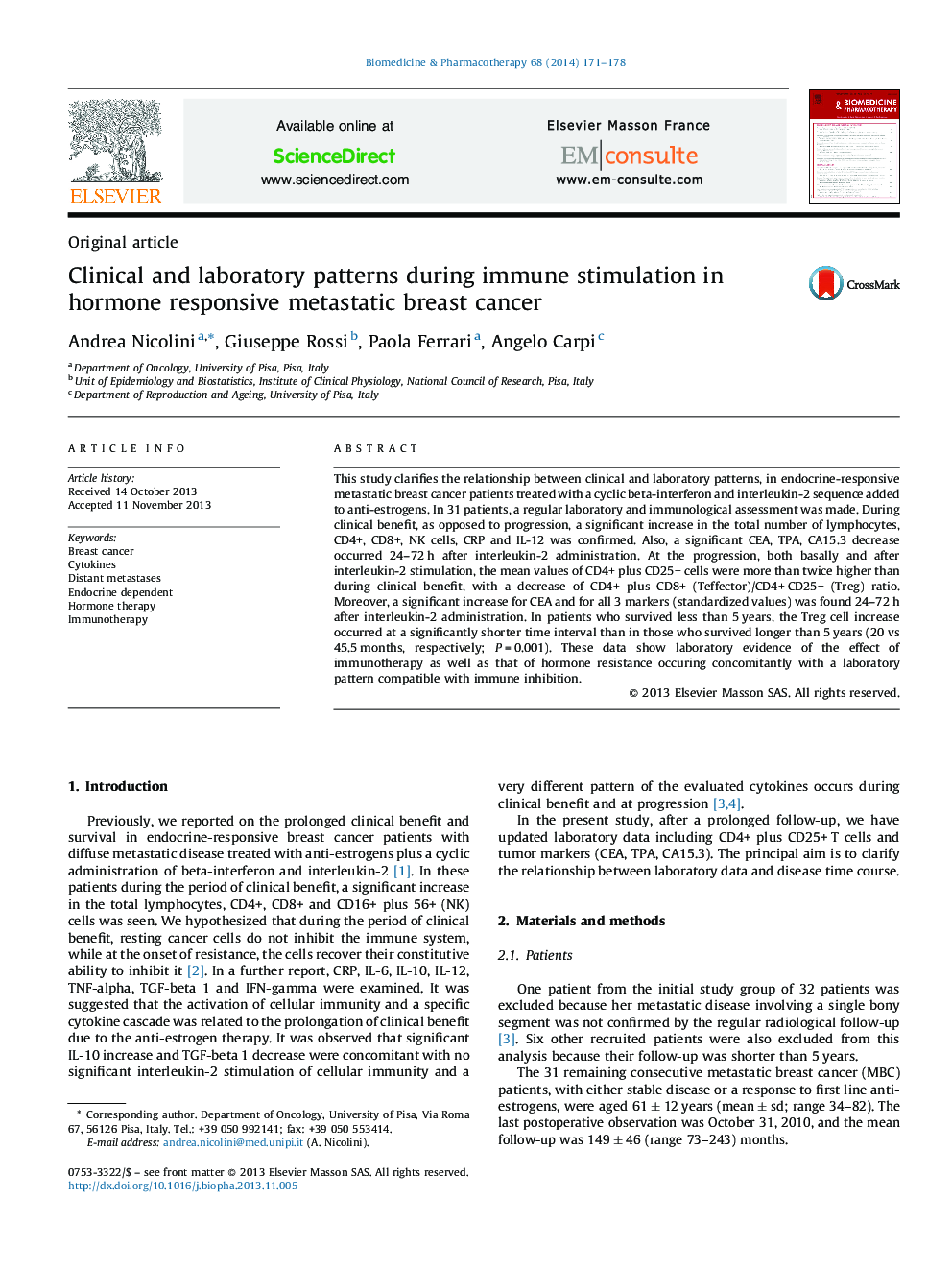| Article ID | Journal | Published Year | Pages | File Type |
|---|---|---|---|---|
| 2525043 | Biomedicine & Pharmacotherapy | 2014 | 8 Pages |
This study clarifies the relationship between clinical and laboratory patterns, in endocrine-responsive metastatic breast cancer patients treated with a cyclic beta-interferon and interleukin-2 sequence added to anti-estrogens. In 31 patients, a regular laboratory and immunological assessment was made. During clinical benefit, as opposed to progression, a significant increase in the total number of lymphocytes, CD4+, CD8+, NK cells, CRP and IL-12 was confirmed. Also, a significant CEA, TPA, CA15.3 decrease occurred 24–72 h after interleukin-2 administration. At the progression, both basally and after interleukin-2 stimulation, the mean values of CD4+ plus CD25+ cells were more than twice higher than during clinical benefit, with a decrease of CD4+ plus CD8+ (Teffector)/CD4+ CD25+ (Treg) ratio. Moreover, a significant increase for CEA and for all 3 markers (standardized values) was found 24–72 h after interleukin-2 administration. In patients who survived less than 5 years, the Treg cell increase occurred at a significantly shorter time interval than in those who survived longer than 5 years (20 vs 45.5 months, respectively; P = 0.001). These data show laboratory evidence of the effect of immunotherapy as well as that of hormone resistance occuring concomitantly with a laboratory pattern compatible with immune inhibition.
